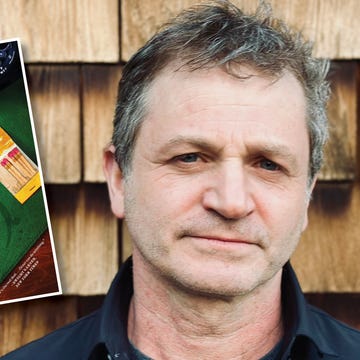California’s famed trees—SoCal’s classic palm, for example—are beautiful, sure. But the region’s urban forestry is so much more than just gorgeous greens. In his latest for Alta Journal, writer Joseph Giovannini examines the exciting past, present, and future of the trees that line the streets of the Southland’s cities and improve everything from air quality to economic development. Along with Santa Monica public landscape manager Matthew Wells, Alta Live will get to the root of some of the issues and questions Giovannini brings up. Are the right kinds of trees in the right regions? Which trees are public and which ones are private? Are resources like water being thoughtfully managed? We’ll digitally stroll the urban forests of Los Angeles County with Wells and learn about the trees that have shaded and surrounded us for decades.
About the guest:
Matthew Wells is the public landscape manager for the coastal City of Santa Monica in Southern California. Santa Monica strives to be a beacon of sustainable local government. Prior to this role, Wells served as the director of tree preservation for NYC Parks, an arboricultural officer for the London Borough of Camden, and a tree surgeon in his local English village. As a chartered forester with a master’s degree in arboriculture and urban forestry, he has a unique international experience of urban forestry. Wells has presented at conferences globally and is passionate about research-driven resource management.
Here are some notable quotes from this event:
- On modern-day Santa Monica tree trends: “We know back then … literally every block, or every couple of blocks, they planted the same species. And that really set the foundation of what we’re managing today. In Santa Monica, we have monocultures essentially; we have the same species of tree on either one block or two blocks, and these will crisscross.”
- On local versus global planning: “We’ve got a dead tree here, this quadrant needs to be pruned, and this person’s got a problem with a tree over here—versus what’s it going to look like in 50 years? Do we have a plan? We need to make sure we’re working at a local level, but we need to be globally thinking about what’s going on with the resources.”
- On planting trees: “When you get to a grander scale, like Santa Monica, you have to be more forestry-based. Yes, we can try and save trees, but ultimately, what’s most important is we’re putting enough new trees back in the ground. And we’re thinking about species diversity, thinking about resilience; we’re making sure that what we’re planting isn’t going to damage the sidewalk, isn’t going to grow into overhead wires, and isn’t going to upset local residents.”
Check out these links to some of the topics brought up this week.
- Read “Seeing the Trees for the Forest,” by Joseph Giovannini.
- Buy Trees of Santa Monica, by George C. Hastings.
- Check out TreePeople, one of the first tree-oriented organizations, based in Los Angeles.
- View Santa Monica’s historic tree map.
- Visit Santa Monica’s heritage trees.
- Review Santa Monica’s graph of tree canopy coverage from 2001 to 2022.
- Read about two tree diseases that are rampant in Santa Monica: ficus branch canker and sycamore anthracnose.•











